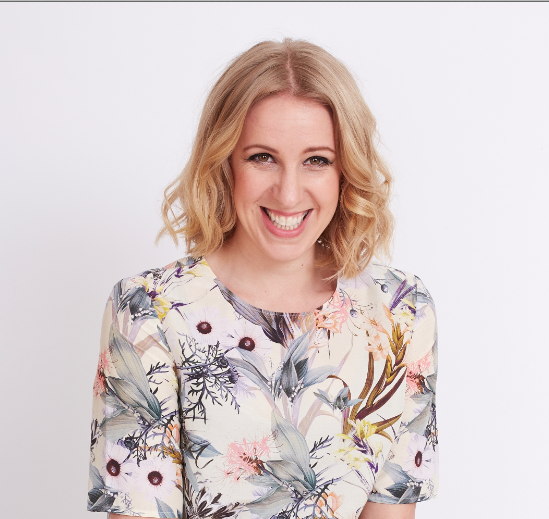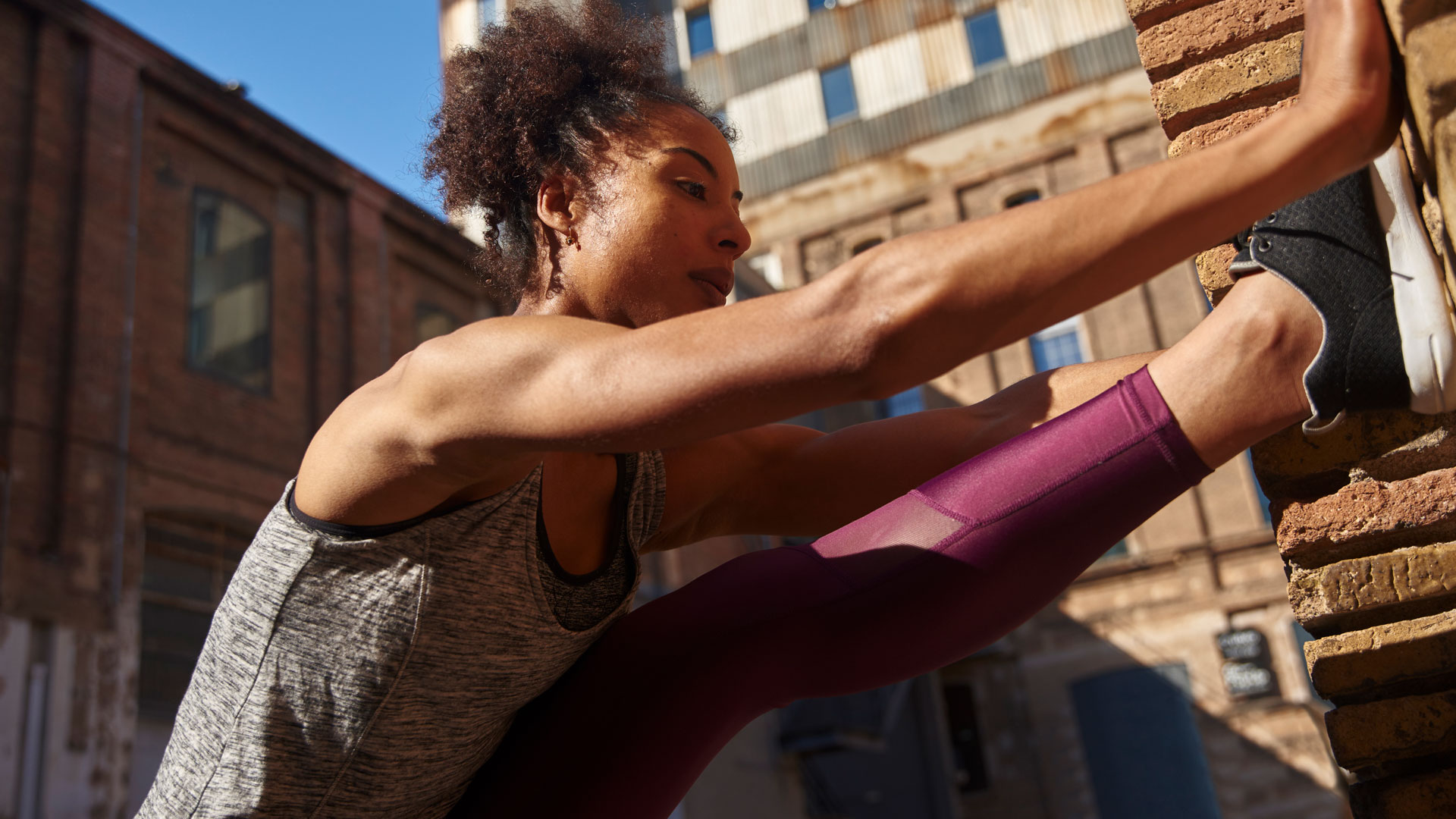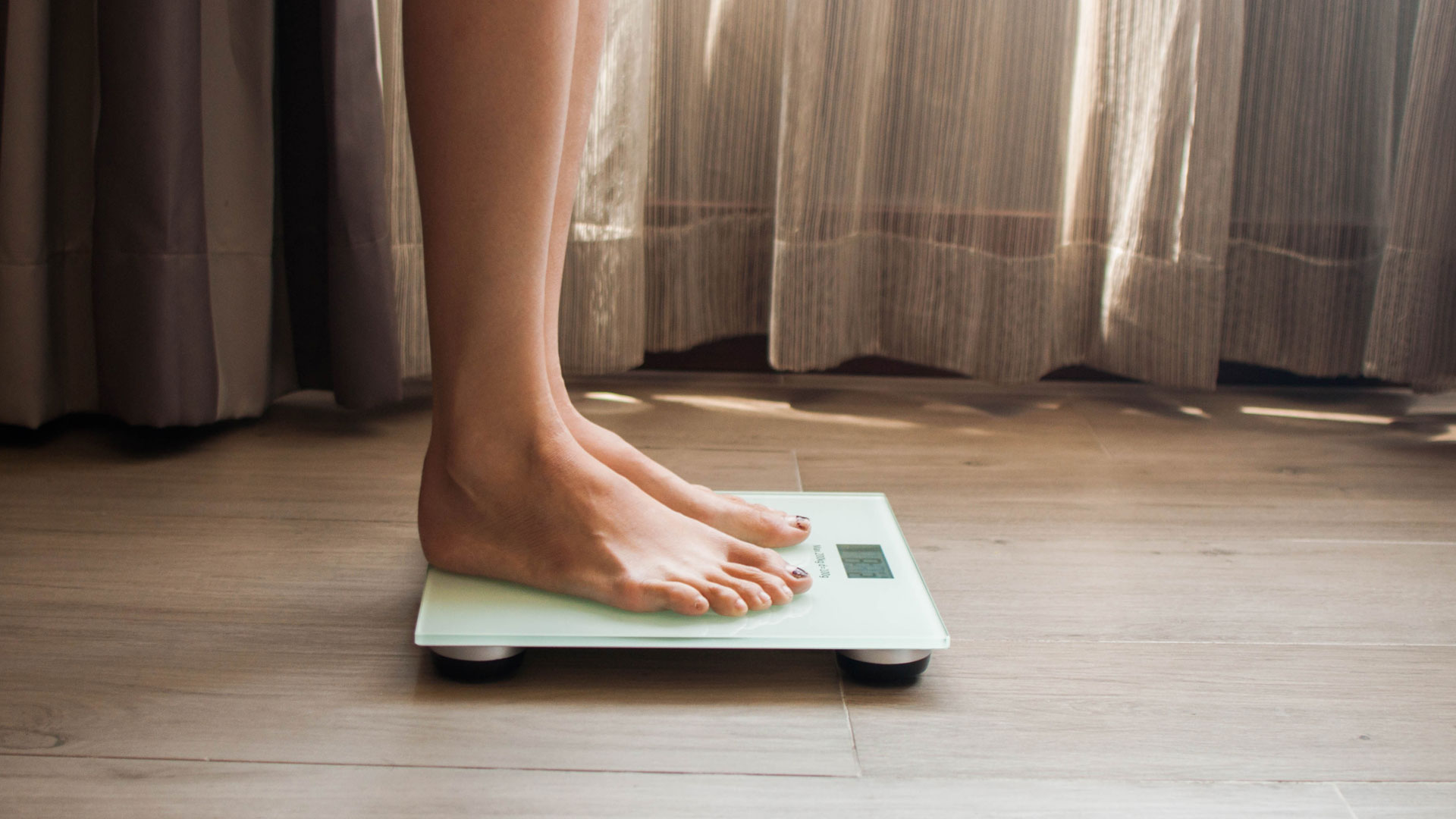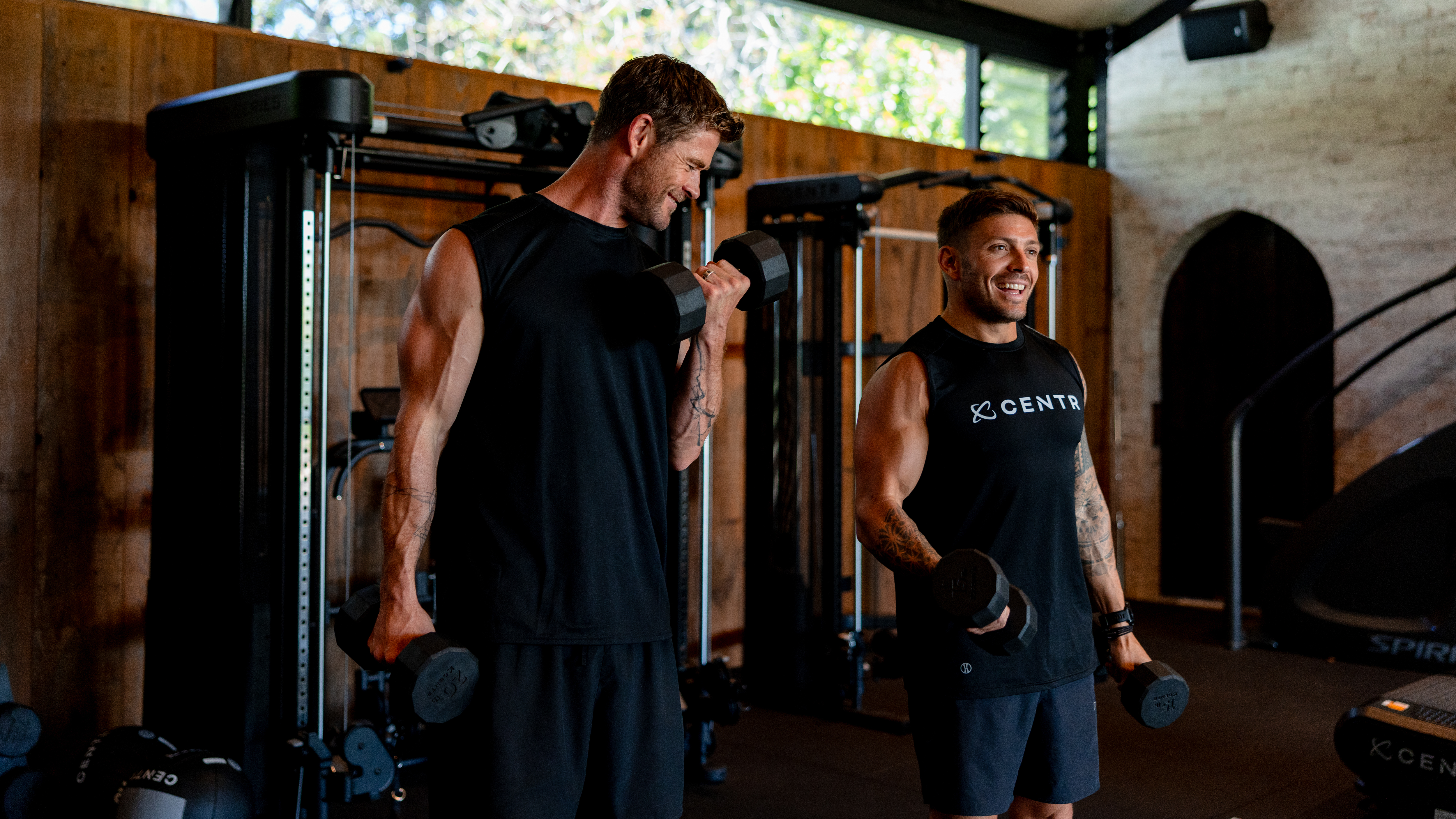Weight loss vs fat loss: what’s the difference?
Weight loss vs fat loss: what’s the difference and why does it matter? We spoke to a registered dietitian to find out


Weight loss vs fat loss: what’s the difference? While people about to go on a diet often say they want to ‘lose weight’, they instead need to lose fat to get lean.
Put simply, weight loss refers to the total reduction of a person’s kilo weight from fat, muscle, and water. But you can’t distinguish between what you lose, so you could lose muscle tone as well.
Fat loss on the other hand is weight loss as a result of shedding body fat - this is better for your health because the metabolic decline that occurs when you lose body mass can cause unfavorable changes in body composition.
In this article, we’ll take a deeper dive into everything you need to know about weight and fat loss, and if you’re interested, check out our guide to the best protein powder for weight loss, too.
“If you are trying to lose weight, it’s likely you are trying to lose body fat and not muscle. So sustainably losing fat while maintaining lean body mass is more important than overall weight loss,” says registered dietitian Nigel Denby from Harley Street At Home.
We need body fat to function - it acts as an energy store, protects our organs, cushions joints, and helps regulate body temperature. “But excess body fat is not good for your health - it increases your risk of type 2 diabetes, heart disease, and some cancers.”
In the US, 36.5% of adults are obese and 32.5% are overweight, while obesity affects 1 in 6 children, according to the CDC.
Get the Fit&Well Newsletter
Start your week with achievable workout ideas, health tips and wellbeing advice in your inbox.
You can lose weight and body fat by dropping the number of calories you consume to create what's known as a calorie deficit - and upping your exercise.
As well as the quantity of food consumed, when you eat healthily it’s important to pay attention to the nutritional value, particularly micronutrients (protein, fat, and carbohydrates), as well as portion size.
For fat loss, a good resistance program is also essential. Studies have shown that lifting weights helps maintain and grow muscle (known as hypertrophy). And the more muscle you have, the more calories your body will burn.

Nigel Denby is a registered dietitian, author of 10 books, and broadcaster across radio and television. He has a special interest in menopause and weight management, digestive issues, and women’s health. He is the founder of the online menopause support community Harley Street At Home. Nigel created the Back to Basics 12-week Menopause Weight Management and Lifestyle Programme specifically for women who are struggling with their weight during perimenopause and menopause.
Weight loss vs fat loss: what’s the difference?
“Your body mass (your total body weight) is made up of body fat and lean body mass. Lean body mass is quite a general term and includes water and other body fluid, bones and muscle mass,” Denby told Fit&Well.
“Muscle mass and fat mass are really the two types of body mass most relevant when we think about weight loss and weight gain. If your body weight changes, it’s useful to know whether the change is in your body fat or muscle, as each can have very different implications for overall health.
“There are significant benefits to having higher muscle mass and less body fat: you’ll have a faster metabolic rate, which means you’ll burn more calories carrying out normal daily activities than someone with a slower metabolic rate. You’ll also be likely to live longer and have better health than someone with lower levels of muscle mass.
It’s important to note that perimenopause and menopause play a role in body fat, too, says Denby.
“During perimenopause, as estrogen levels reduce, women begin to change the way they lay down fat. Fat accumulates around the waist and mid-section of the body. Fat also becomes more visceral, it wraps around the body’s internal organs rather than laying under the skin (subcutaneous fat).
“The rate at which women lose muscle mass through the normal aging process accelerates at menopause, too. This slows the metabolism a little. Perimenopause and menopause can be described as a ‘perfect storm’ for weight gain for women. 75% of women gain up to 10kg during perimenopause.”

Does muscle weigh more than fat?
There’s long been debate over whether muscle weighs more than fat. “The truth is, 1kg of muscle weighs the same as 1kg of fat, but the fat will have a greater volume and the muscle fibers will have a greater density. In other words, 1kg of muscle will take up less space and look smaller than 1kg of fat,” says Denby.
“People can be the same weight yet have very different percentages of body fat. A body builder with a very low percentage of body fat and high percentage of muscle mass can weigh exactly the same as a sumo wrestler with a high percentage of body fat and much lower percentage of muscle mass.”
“To reduce your body fat you need to achieve a calorie deficit by changing the quantity and/or nutritional quality of the food you eat. You also need to increase the number of calories you use by being active and exercising.
“Of course, it’s possible to lose body weight by just following a very low-calorie diet (less than 800 calories per day), but this often means you lose muscle mass and body fat.”
While most people would prefer to lose body fat without losing their hard-earned muscles, how do you measure this?
“In medical and research laboratories the most accurate forms of measuring body composition are Dual Energy X-Ray Absorptiometry (DEXA) and Air Displacement Plethysmography (ADP), but neither of these options is realistic at home,” says Denby.

How to measure fat loss at home
Most scales don’t differentiate between fat loss and muscle loss, but there are several ways you can measure body fat percentage at home. None are perfect and each has its drawbacks and considerations, says Denby.
Skinfold caliper
“These handheld tools come in manual or digital versions and can range in price. They are relatively easy to use and they pinch and measure the thickness of subcutaneous (under the skin) fat in several areas of the body, including the abdomen, triceps, and thighs. Studies show that skinfold calipers can be an accurate way to measure body fat but they require some skill and knowledge of anatomy.”
Body circumference measurements
“Circumference measurement (CM) is another way to measure body fat at home, and it’s used by the US Department of Defense. This method uses a tape measure to take measurements of specific sites on the body. These measurements are then entered into an equation to determine body fat percentage.”

Body fat scales
“Unlike traditional scales that only measure body weight, body fat scales (smart scales) combine weight scales with something called a foot-to-foot impedance meter (FFI). The FFI estimates body fat and muscle mass by sending electrical currents to the body and measuring the response. Muscle and fat respond differently to electrical currents, and the scale uses these differences to determine body fat. But accuracy can vary widely between brands.”
Waist circumference
“Knowing your waist circumference can help you determine if you have too much fat stored around your midsection. All you need to do is to place a tape measure around your midsection above your hip bones, making sure the tape measure is horizontal around your waist. Keep the tape measure snug, but make sure to avoid compressing the skin. Breathe out, and then measure the circumference of your waist. The larger your waist circumference, the more belly fat you’re likely to have. In order to reduce the risk of many health conditions, the World Health Organization (WHO) recommends that waist circumference be kept below a certain measurement: 40.2” for men and 31.5” for women. Keep in mind that even though measuring your waist circumference can be a good indicator of whether or not you carry excess body fat in your midsection, it can’t tell your overall body fat percentage.”
Why is it important to know which type of weight you’re losing?
Losing weight in the form of muscle can reduce the number of calories you burn at rest – known as your Basal Metabolic Rate – meaning you are more likely to regain any weight you lost in the form of fat.
“Many people lose weight, then regain,” confirms Denby. “The yo-yo cycle from one ‘fad diet’ to another often results with the dieter being heavier and having a higher body fat percentage after several rounds of the cycle than when they started dieting.”
Plus, we want to avoid losing muscle with the weight, as it’s detrimental to overall health – we need a healthy percentage of muscle to help regulate blood sugar levels, maintain healthy fat levels (like triglycerides and cholesterol) in the blood, and to control inflammation in the body.
Building and maintaining muscle is also important for reducing the risk of age-related muscle loss, known as sarcopenia.
Maddy Biddulph is a freelance journalist specializing in fitness, health and wellbeing content. With 26 years in consumer media, she has worked as a writer and editor for some of the bestselling newspapers, magazines and websites in the US and UK.
She is also a qualified L3 personal trainer and weight loss advisor, and helps women over 40 navigate menopause by improving their physical and mental strength. At Maddy Biddulph Personal Training, she runs one-to-one and small group training for menopausal women who want to get fit to ease symptoms and feel like themselves again.
-
 Build blockbuster arms and abs with Chris Hemsworth's go-to dumbbell circuit
Build blockbuster arms and abs with Chris Hemsworth's go-to dumbbell circuitAll you need are adjustable dumbbells and 20 minutes
By Sam Rider Published
-
 Forget crunches—if I wanted to improve core strength I'd do this neck-friendly Pilates workout
Forget crunches—if I wanted to improve core strength I'd do this neck-friendly Pilates workoutAnd it takes just five minutes
By Maddy Biddulph Published